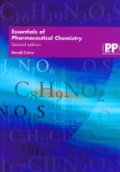Alternative Solvents for Green Chemistry
Kerton F.
ISBN: 9781849735957
Vydavatelství: Royal Society for Chemistry
Rok vydání: 2013
Vydání: 2nd Edition
Vazba: Hardback
Počet stran: 350
Původní cena: 4 802 Kč
Výstavní cena:
4 322 Kč(t.j. po slevě 10%)
(Cena je uvedena včetně 10% DPH)
Katalogová cena: 139.99 GBP
Nárok na
dopravu zdarma
Termín dodání na naši pobočku v Brně je přibližně 3-4 týdny.
Everyone is becoming more environmentally conscious and therefore, chemical processes are being developed with their environmental burden in mind. This also means that more traditional chemical methods are being replaced with new innovations and this includes new solvents. Solvents are everywhere, but how necessary are they? They are used in most areas including synthetic chemistry, analytical chemistry, pharmaceutical production and processing, the food and flavour industry and the materials and coatings sectors. However, the principles of green chemistry guide us to use less of them, or to use safer, more environmentally friendly solvents if they are essential. Therefore, we should always ask ourselves, do we really need a solvent? Green chemistry, as a relatively new sub-discipline, is a rapidly growing field of research. Alternative solvents - including supercritical fluids and room temperature ionic liquids - form a significant portion of research in green chemistry. This is in part due to the hazards of many conventional solvents (e.g. toxicity and flammability) and the significant contribution that solvents make to the waste generated in many chemical processes. Solvents are important in analytical chemistry, product purification, extraction and separation technologies, and also in the modification of materials. Therefore, in order to make chemistry more sustainable in these fields, a knowledge of alternative, greener solvents is important. This book, which is part of a green chemistry series, uses examples that tie in with the 12 principles of green chemistry e.g. atom efficient reactions in benign solvents and processing of renewable chemicals/materials in green solvents. Readers get an overview of the many different kinds of solvents, written in such a way to make the book appropriate to newcomers to the field and prepare them for the 'green choices' available. The book also removes some of the mystique associated with 'alternative solvent' choices and includes information on solvents in different fields of chemistry such as analytical and materials chemistry in addition to catalysis and synthesis. The latest research developments, not covered elsewhere, are included such as switchable solvents and biosolvents. Also, some important areas that are often overlooked are described such as naturally sourced solvents (including ethanol and ethyl lactate) and liquid polymers (including poly(ethyleneglycol) and poly(dimethylsiloxane)). As well as these additional alternative solvents being included, the book takes a more general approach to solvents, not just focusing on the use of solvents in synthetic chemistry. Applications of solvents in areas such as analysis are overviewed in addition to the more widely recognised uses of alternative solvents in organic synthesis. Unfortunately, as the book shows, there is no universal green solvent and readers must ascertain their best options based on prior chemistry, cost, environmental benefits and other factors. It is important to try and minimize the number of solvent changes in a chemical process and therefore, the importance of solvents in product purification, extraction and separation technologies are highlighted. The book is aimed at newcomers to the field whether research students beginning investigations towards their thesis or industrial researchers curious to find out if an alternative solvent would be suitable in their work.
